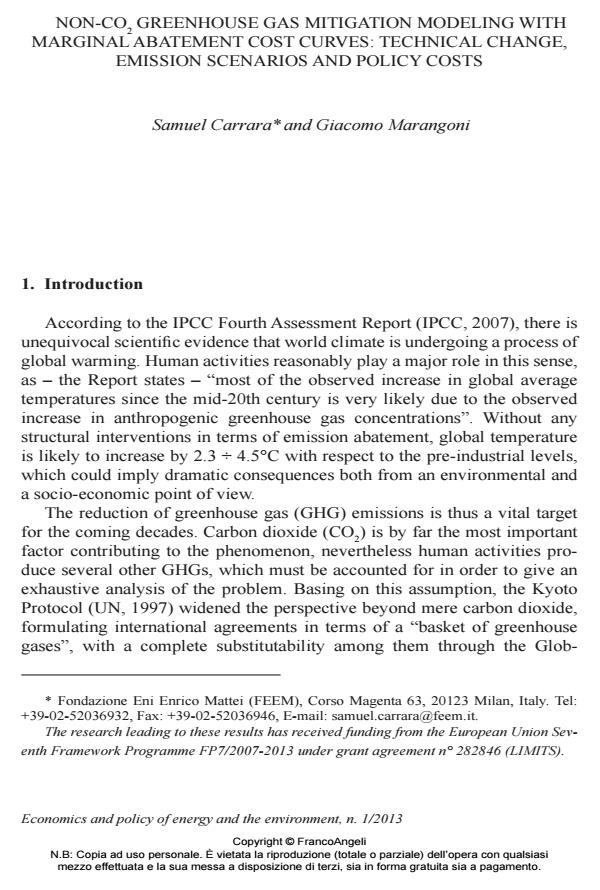Non-CO2 greenhouse gas mitigation modeling with marginal abatement cost curv es: technical change, emission scenarios and policy costs
Journal title ECONOMICS AND POLICY OF ENERGY AND THE ENVIRONMENT
Author/s Samuel Carrara, Giacomo Marangoni
Publishing Year 2013 Issue 2013/1
Language English Pages 34 P. 91-124 File size 871 KB
DOI 10.3280/EFE2013-001006
DOI is like a bar code for intellectual property: to have more infomation
click here
Below, you can see the article first page
If you want to buy this article in PDF format, you can do it, following the instructions to buy download credits

FrancoAngeli is member of Publishers International Linking Association, Inc (PILA), a not-for-profit association which run the CrossRef service enabling links to and from online scholarly content.
The abatement of non-CO2 greenhouse gases (OGHG) has proved to be of par- amount importance for reaching global mitigation targets. The modeling of their abatement is normally carried out referring to marginal abatement cost (MAC) curves, which by now represent a standard approach for such an analysis. As no evolution scenarios are available to describe future mitigation opportunities for OGHGs, exogenous technical progress factors (TP) are normally imposed, producing progressive MAC dilatation over time. The main aim of this work is to perform a sensitivity analysis evaluating climate and economic effects of imposing various TPs under different policy scenarios. The analysis shows that TP variation has a considerable impact on the climatic and economic results.
Keywords: Environmental economics, non-CO2 greenhouse gases, marginal abatement cost curve, technical change
Jel codes: Q54, Q55
Samuel Carrara, Giacomo Marangoni, Non-CO2 greenhouse gas mitigation modeling with marginal abatement cost curv es: technical change, emission scenarios and policy costs in "ECONOMICS AND POLICY OF ENERGY AND THE ENVIRONMENT" 1/2013, pp 91-124, DOI: 10.3280/EFE2013-001006